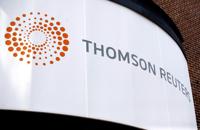TORONTO - Lower interest rates are coming for some of the most expensive forms of debt as the federal government pushes forward on a law to reduce them.
Lenders in the space, though, have a warning for the government: lower the rate cap and millions of customers could lose access to credit.
Meanwhile, advocates and experts, who have generally welcomed plans for lower rates, say the potential that some could be shut out of existing options instead point to the need for better alternatives, including possible government-backed offerings from big banks.
Momentum on the changes has been gathering since the government published draft regulations in late December to lower the criminal rate of interest to a 35 per cent annual percentage rate from 47 per cent, and adjust the payday lender exemption so they can charge a maximum of $14 per $100 borrowed.
The şÚÁĎłÔąĎÍř Lenders Association had pushed for an exemption to interest-rate maximums for small-dollar loans, but was shut out.
That prompted members of the group, which represents hundreds of lenders, to send out over a million letters so far with more to come, warning borrowers they might no longer qualify for new loans, said Jason Mullins, vice-chair of the association and chief executive of lender goeasy Ltd.
“A meaningful number will get declined for a loan and, of course, have to turn to much less desirable sources,” he said.
The şÚÁĎłÔąĎÍř Consumer Finance Association, representing payday lenders, similarly warned the law will push borrowers at the bottom rungs of the credit ladder into the unregulated market.
But while the industry is emphasizing unintended consequences, advocates have welcomed the chance for cheaper loans, even if the top rate could still lead to financial strain.
“It's better than it was, but if someone takes out a larger loan, the 35 per cent is still going to be really high,” said Donna Borden, a leader at anti-poverty advocacy group ACORN Canada.
Along with a further lowering of the cap, she would like to see fees and insurance wrapped into the max, as they can significantly inflate the overall cost.
She speaks from experience, saying that some years back she paid $24,000 toward a $10,000 loan only to find she still owed thousands more.
Borden said the high cost of the loans push far too many deeper into a debt trap.
“Even though they consider themselves that they're helping people, they're not helping people. They’re putting people in bad financial situations into worse financial situations.”
Reducing the maximum interest rate is a welcome move, said Brian Dijkema, şÚÁĎłÔąĎÍř president of think tank Cardus, but he raised concerns about how the lower payday rate will put lenders out of business, cutting off an option that can sometimes be cheaper than the penalties for a missed payment, like a utility reconnection fee.
The government also figures there will be fewer such loans, estimating the lower rate will save borrowers about $26 million a year over 10 years, in part by reducing the number of borrowers by 44,000.
Since there will still be demand, Dijkema said more alternatives are needed.
“Government should be working with the major financial players ... to find ways that they could leverage their vast network of branches, and also their capital and expertise, to offer lower-cost loans.”
A government-backed bank option is also what Brenda Spotton Visano, a professor of economics and public policy at York University, sees as the best way to fill needs.
She said an overdraft program of around $500 would be the most straightforward way to deliver that key buffer as part of expanded banking services, and that the government has to better regulate high-cost credit along with its plan to reduce rates.
"It's got to be a three-pronged approach," said Spotton Visano. "You can't just do one without addressing the supply and demand."
The Department of Finance said it will review the feedback it gets, but that it's lowering rates because predatory lenders can take advantage of some of the most vulnerable şÚÁĎłÔąĎÍřs including low-income şÚÁĎłÔąĎÍřs, newcomers, and seniors.
The şÚÁĎłÔąĎÍř Bankers Association said in a statement that members are responsive to the needs of customers, and that many banks offer small, short-term loan and credit options at much better rates than alternatives.
TD Bank Group and Canada Post did roll out an instalment loan program called MyMoney in late 2022, but it was indefinitely shelved after a security issue. Neither responded to requests for an update.
Credit unions have also tried to offer small loan alternatives, but everything from awareness to speed of access means there’s been limited take-up, said Dijkema.
Some have been making progress though.
Vancity launched its Fair and Fast loan program about a decade ago, and has since added online applications and dropped the credit check requirement, helping it reach a rate of about 2,400 loans a month ranging from $100 to $2,500 at 19 per cent interest.
However, borrowers still need to get a $5 membership, and be with the credit union for three months before they can use the option, providing Vancity a look at the borrower’s financial picture.
The program has higher delinquency rates and operational costs, but it’s part of meeting all clients needs, said Jonathan Fowlie, head of external relations and impact strategy at the credit union.
“What we've learned is, look at the whole continuum. Because financial health, we have found, is not necessarily directly correlated to income and it is not a permanent state of affairs. Emergencies come up by their very nature out of nowhere, and they affect all of us.”
This report by şÚÁĎłÔąĎÍř was first published Jan. 21, 2024.
Companies in this story: (TSX:GSY)
Note to readers: This is a corrected story. A previous version said the government released draft legislation related to interest rates in December. In fact, the government released draft regulations.








































